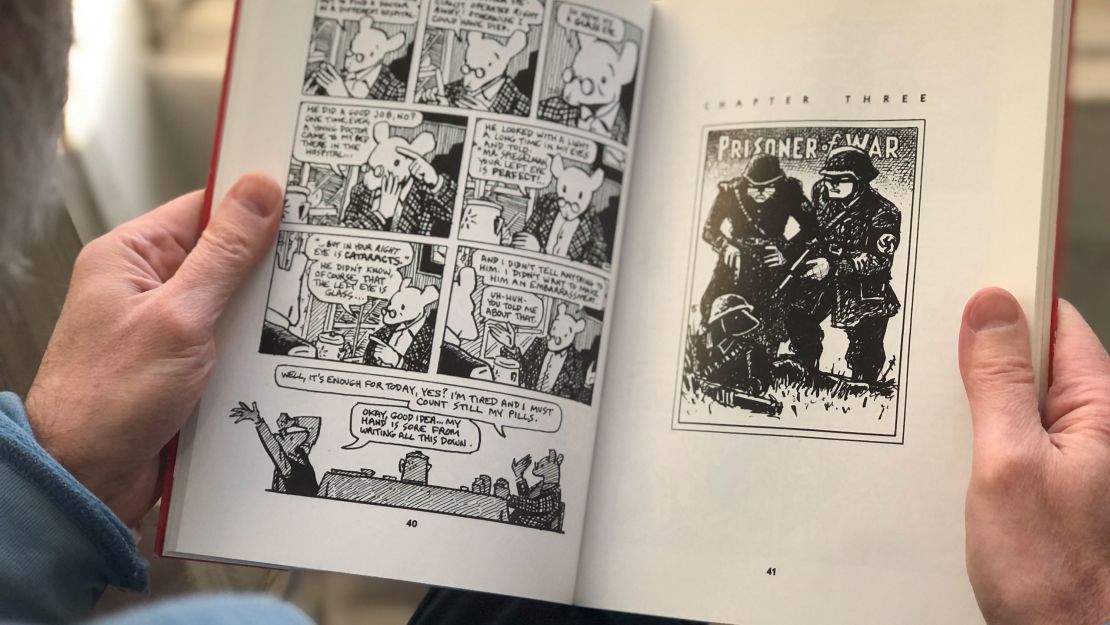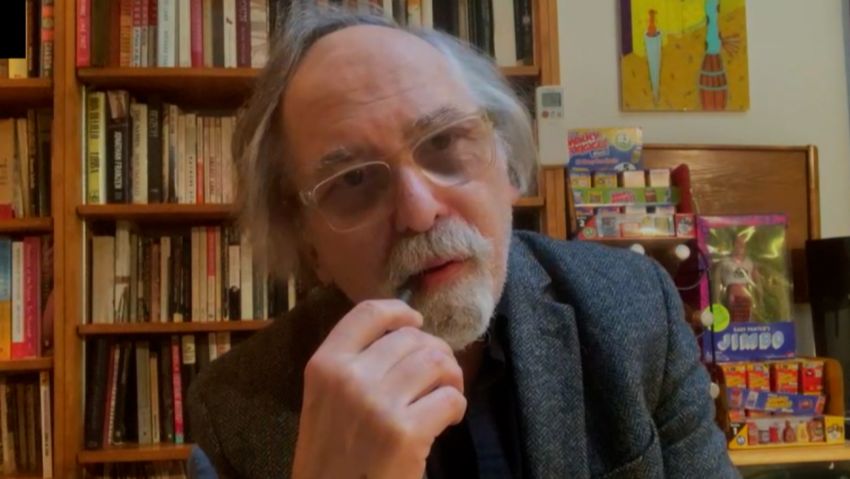Editor’s Note: David M. Perry is a journalist and historian and co-author of “The Bright Ages: A New History of Medieval Europe.” He is a senior academic adviser in the history department of the University of Minnesota. Follow him on Twitter. The views expressed here are those of the author. View more opinion on CNN.
I thought it was a comic book. I first saw this book called “Maus” on the shelf in the guest room of our Nashville house. I don’t remember why I was looking at the books. Maybe I was just a bored 17-year-old looking for something to do. I just remember being confused, because as far as I knew my parents didn’t own any comic books. And why did it have a swastika on the cover? But I picked it up, sat down on the couch and started to read.

As I flipped the pages, I felt myself becoming a little disoriented, unclear why this book was telling the story of the Holocaust in this way, with drawings of Jews as mice and Nazis as cats. But I was quickly drawn in, flipping pages faster and faster, then pausing, going back and trying to process the visual narrative of Art Spiegelman’s graphic novel instead of just skimming words. In the end, I felt unsettled, unsure of what I just encountered, but sensing it mattered deeply.
Back then, as a bookish Jewish teenager, I was pretty sure I knew a lot about the history of the Holocaust. My parents were historians. I was, it turned out, pretty good in history class. I had read “Man’s Search for Meaning” by the survivor Victor Frankl in eighth grade.
But “Maus” was different – I was pulled in by the choices made possible by the medium itself. It was hand-drawn, the mice at once distinct as characters (the author, his mother, his father and their community) but at the same time rendered into a mob of animals fit only for slaughter by the Nazi cats. The triangular shape of the mice’s heads evoked long-held stereotypes about the shapes of our faces as seen by our oppressors, while also conveying warmth and even humanity.

I can’t tell you why it worked, but it did – and reading it changed me. Clearly, I’m not alone in finding the book a perspective-altering experience. It’s the only graphic novel to win the Pulitzer Prize, and it’s become part of school curricula all around the country.
But not everywhere. Earlier this week, back in my home state of Tennessee, the McMinn County Board of Education voted 10-0 to remove the book from the curriculum. They cited a few instances of profanity and a “naked picture” – this is a small image of the artist’s mother in the bathtub after taking pills and slashing her wrists, with her breasts visible – as in violation of standards and thus unteachable. On CNN, Spiegelman said, “You have to really, like, want to get your sexual kicks by projecting on it. I think they’re so myopic in their focus and they’re so afraid of what’s implied and having to defend the decision to teach ‘Maus’ as part of the curriculum that it lead to this kind of daffily myopic response.”
But even though one board member, according to meeting minutes originally reported by TN Holler, was quick to assert he wasn’t “against teaching the Holocaust,” they apparently couldn’t allow it to be taught in a way that included profanity and nudity – in other words, in a way that conveys its dehumanizing reality. The same board member said, “[Maus] shows people hanging, it shows them killing kids, why does the educational system promote this kind of stuff, it is not wise or healthy.”
But this betrays a fundamental misunderstanding of what education is. To ban “Maus” for being an uncomfortable read is, in fact, to be against teaching the Holocaust, regardless of the school board member’s protests to the contrary. To actually engage with the horror of the Holocaust, one has to be horrified, thrown from one’s comfortable position, engaging with the terrible, messy reality.
But I think back to my encounter with the book on my couch, and I think that’s the kind of moment that kids actually do need. We need to be unsettled by history, especially if presented by a well-trained teacher with a thoughtful supporting curriculum. Because the Holocaust is not just a collection of unthinkable numbers – six million Jews, hundreds of thousands of Roma and tens of thousands more of political rivals, disabled people, LGBTQ people and others. It’s millions of stories of individual lives lived in full complexity, and to understand what happened, the whys and hows, the generational traumas that live with us today, we may need to be unsettled in our encounter with this grim past.
And of course that’s true if we want to understand other grim moments in history as well. And while the timing of canceling “Maus” a few days before International Holocaust Remembrance Day is telling, it’s also happening in the midst of a growing number of right-wing attacks on teaching history. Before this latest incident, for example, a White Tennessee mom tried to take advantage of a new law against “critical race theory,” which is being used as a catchall phrase for any history that tells accurate stories of racial oppression, to try to get an autobiography of Ruby Bridges banned as “divisive.” And then, earlier in January, Florida Republicans advanced a bill designed to shield students from feeling “discomfort” over race, sex and gender when learning about history (of racism, sexism and gender discrimination). The effect will be, as likely intended, to make it impossible to teach history effectively.
And that’s likely the point. When we are unsettled by history, when our perceptions start to shift, that’s when we’re ready to learn. To outlaw discomfort in the classroom is to outlaw good teaching.

